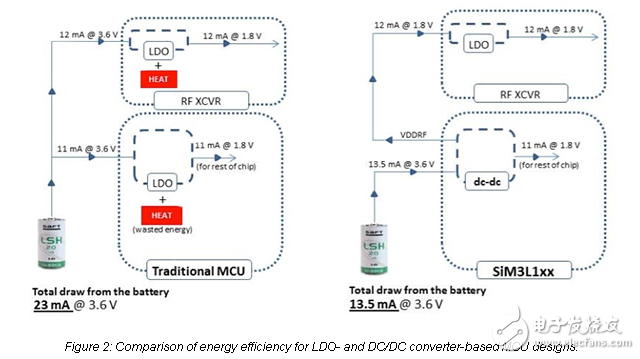
资料下载

电压控制提高传感器节点效率
电压控制提高传感器节点效率
无线传感器节点为物联网的增长提供了驱动力。无线传感器节点的两个最重要的方面是,他们应该作出反应,在当地环境的变化和能源效率足够的生存在一个单一的电池充电多年-可能整个预期寿命的传感器。为了确保传感器只对重要的变化作出反应,越来越复杂的软件将被下载到其中。这反过来,要求高效的处理器,如那些基于32位ARM的放大器皮质的M - M架构,或为简单的传感器,改进版本的8位内核,如8051。
系统级功耗取决于处理器本身的功率效率的许多变量。为了提高效率,低能量的MCU采用一些智能外设控制的核心处理器为硬件。这些外围设备工作在不同的时间,将有电力需求,改变在毫秒到毫秒的基础上。他们需要灵活的电源架构来支持这个

The reason for the need to control power to individual parts of the system and even to peripherals integrated into the MCU itself is to support a low duty cycle. The duty cycle determines how long during its lifetime the MCU processor is awake and processing data and how long it is powered down and asleep. A low duty cycle is important because the processor within the system spends almost all of its time asleep in order to save energy.
The low duty cycle strategy has proved highly effective in the design of utility meters where the processor core may sleep for 99 percent of its overall life cycle. It wakes only to collect data from sensor inputs, normally at a scheduled time or respond to unscheduled interrupts. Intelligent peripherals support this by checking data from inputs without needing to wake the processor. Only if a threshold is surpassed does the peripheral trigger an interrupt that will cause the processor to handle the change in circumstances. This strategy ensures that only significant changes are processed. Those that imply very little has changed can be queued in memory and handled when the processor core has been woken up for other reasons.
声明:本文内容及配图由入驻作者撰写或者入驻合作网站授权转载。文章观点仅代表作者本人,不代表电子发烧友网立场。文章及其配图仅供工程师学习之用,如有内容侵权或者其他违规问题,请联系本站处理。 举报投诉
- 相关下载
- 相关文章






